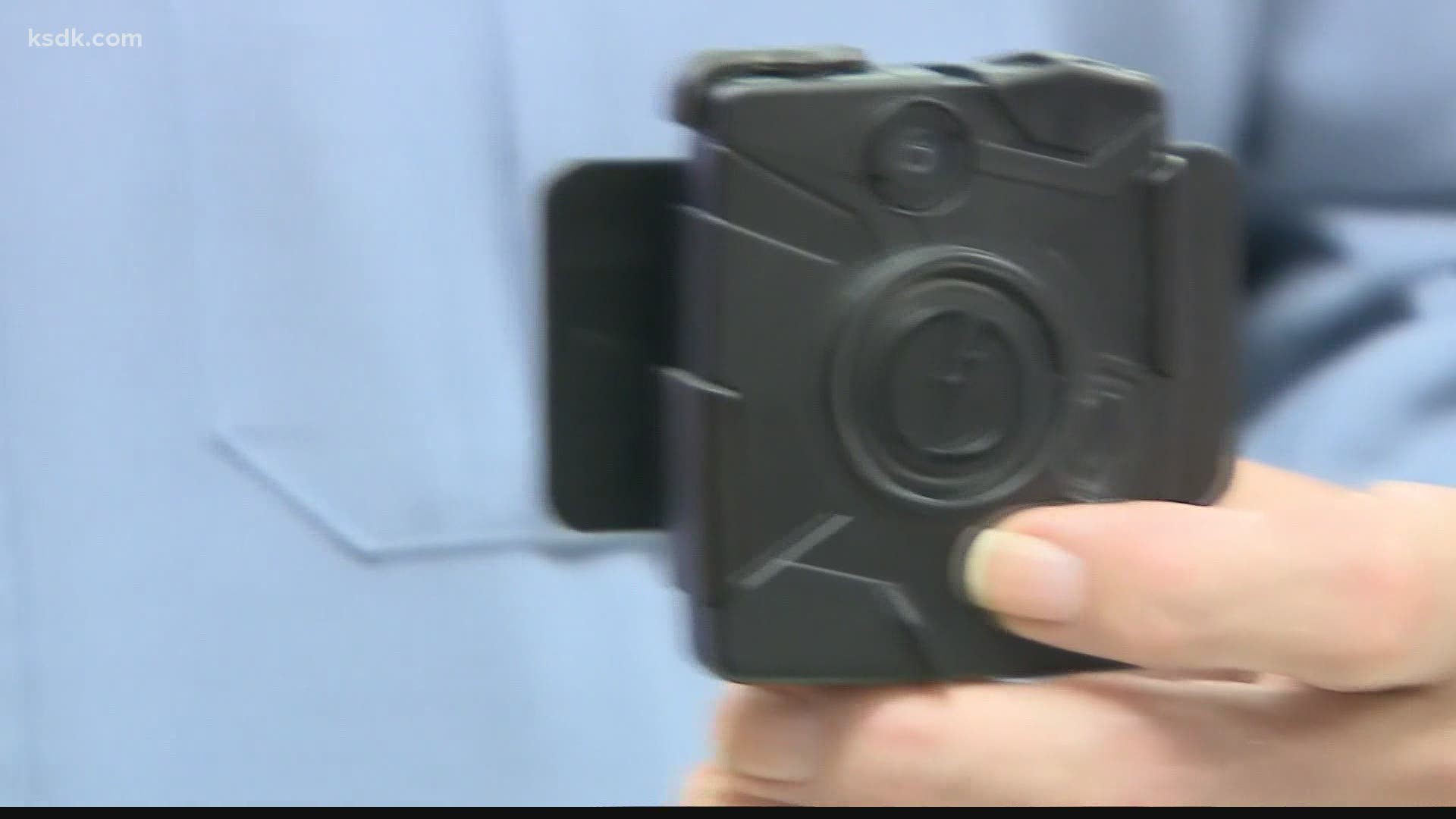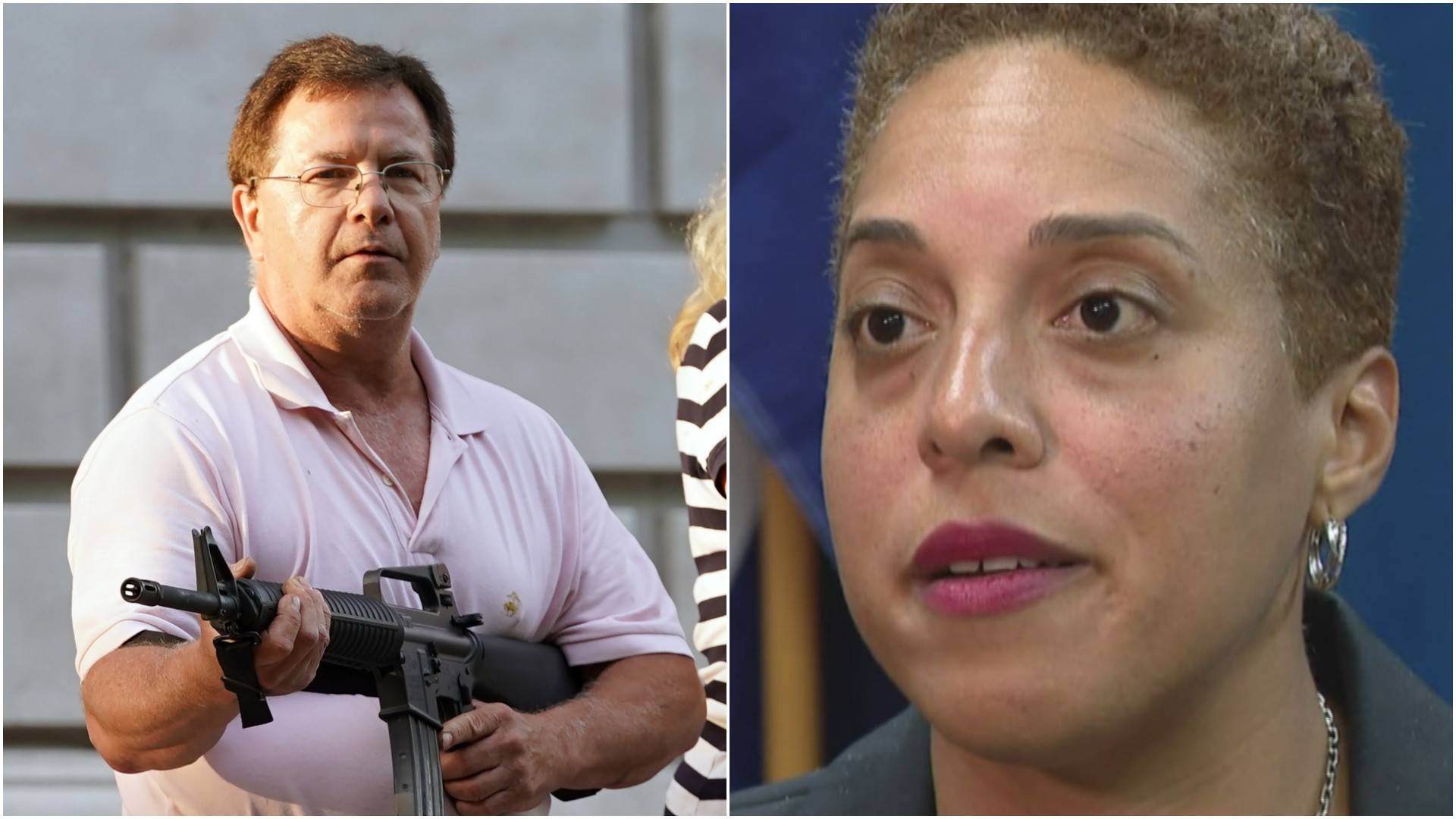ST. LOUIS — In the wake of the controversial police shooting of Michael Brown in 2014, President Barack Obama announced he was setting aside $263 million to equip police departments with body cameras.
By then, there were so many versions of what happened during that fatal encounter on Aug. 9, 2014.
And none of them were caught on camera.
Fast forward six years, and the St. Louis Metropolitan Police Department is starting to roll out body cameras.
The city signed a $5 million five-year contract with Utility, a camera company based out of Georgia, in June.
Public Safety Director Jimmie Edwards said 800 officers would be equipped with the cameras by Nov. 30.
But only about 100 officers have them so far throughout the city – as Edwards says the pandemic has slowed the camera company’s ability to sew pockets that hold the cameras into their winter jackets on time.
And the city just started sending officers’ coats off to be retrofitted in October.
Even in just the short 11 days since that deadline has passed, numerous critical incidents have happened in which body camera footage would have been helpful.
A St. Louis police officer was struck in the neck by a shotgun pellet Dec. 3.
But one officer-involved shooting did include body camera footage from at least one officer who was there when a St. Louis officer shot and killed 28-year-old Mark Brewer at a south city storage facility Sunday morning. Chief John Hayden told reporters the man charged at the officer with a screwdriver.
I made a Sunshine Law request for the footage, thinking this could give the public their first chance at seeing the money it spent on the cameras capturing a portion of what goes into an officer’s decision to use deadly force.
But attorneys for the police department denied my request, saying it’s part of an “ongoing investigation.”
I asked St. Louis Board of Aldermen President Lewis Reed what he thought of the department’s denial of the footage.
He has lobbied the city to get the cameras for six years – inspired by the Ferguson shooting and the need for, you guessed it, transparency.
He was shocked the department denied the request and believes it is the first time a member of the press has made such a request.
“So this is the whole reason we put it in place because you have to lift the veil of secrecy off of these things right?” he asked. “And the more information the public has, the more the public can engage and make informed decisions.
“That's the whole reason we did it right? So I can't not tell you why you received the response that you received… What it shows is that we still have some work to do in terms of the process for assuring that footage can and will be made available.”
I understand the need for police departments to withhold some footage, to preserve the integrity of an investigation.
For example, investigators don’t want to risk tainting an investigation by including someone claiming to be a witness, but only reciting what they saw from the release of some body camera footage.
But there has to be a balance.
And it seems other departments have figured it out.
Just google “body camera footage release” and you will see how quickly footage from use-of-force encounters, controversial search warrants and other high profile incidents have been released.
Most times, it’s just days.
They’ve had body cameras for years – many having bought them with the money Obama set aside following that fateful day so the public could have more information about what goes on before an officer pulls their trigger.
Byers' Beat columns:
- How police tracked down suspected killer of pregnant St. Peters woman
- How a child's bravery led to arrest and conviction of Boy Scout leader
- Latest indictment in murder-for-hire plot involving Sweetie Pie's restaurant empire includes alleged shooter
- When a Centene executive comments on policing in St. Louis, consequences follow
- Effort underway to investigate St. Louis County Executive Sam Page's alleged charter violation


